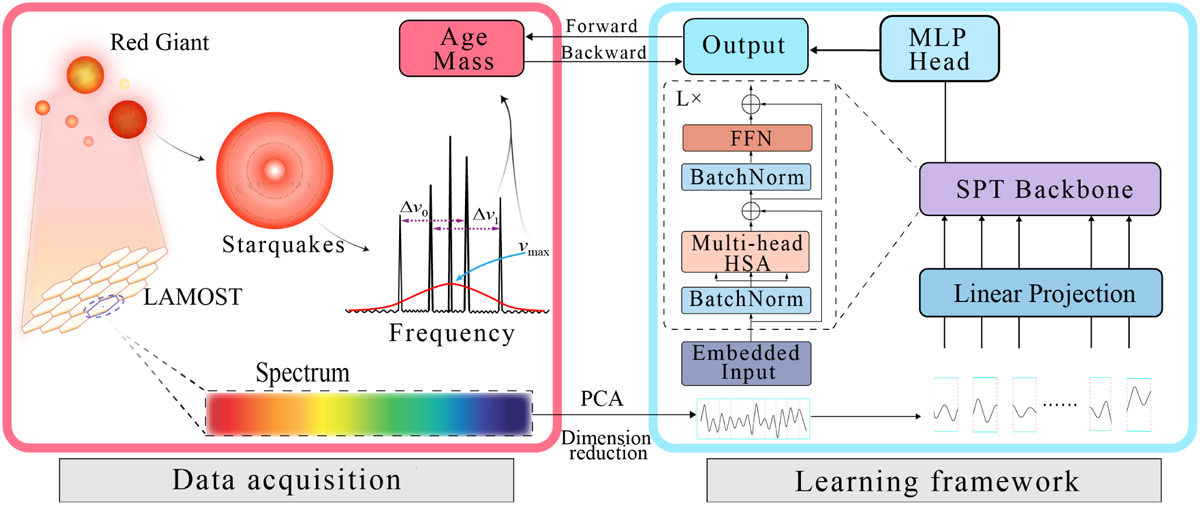Fig. 1

Download original image
Entire framework overview. The data acquisition section (left panel) describes the sources of data for the model. This primarily comprises red giant spectra collected by the LAMOST telescope and the corresponding ages and masses obtained through asteroseismology methods (primarily determined by the mean large frequency, Δv, and the frequency of maximum power, νmax). These data serve as the foundation for training and testing within the learning framework (right panel). The spectra are input into the model after dimensionality reduction via PCA method, while the ages and masses serve as the labels for the model. The input undergoes a transformation through a linear projection layer to generate the embedded input. Subsequently, the SPT backbone is responsible for feature extraction, comprising L SPT blocks (outlined by dashed lines). Each SPT block consists of two batch normalization (BatchNorm) layers, a multi-head HSA layer, a feedforward network (FFN), with two linear layers separated by a GeLU activation, and ⊕ (a residual connection). The high-level semantic features extracted from the SPT backbone are then fed into the MLP head layer, a fully connected multi-layer neural network. The output is the final result of the model, generated by the MLP head. During the forward propagation process, the model computes the predicted values and loss, whereas during the backward propagation process, it calculates gradients and updates parameters to optimize predictive performance.
Current usage metrics show cumulative count of Article Views (full-text article views including HTML views, PDF and ePub downloads, according to the available data) and Abstracts Views on Vision4Press platform.
Data correspond to usage on the plateform after 2015. The current usage metrics is available 48-96 hours after online publication and is updated daily on week days.
Initial download of the metrics may take a while.


